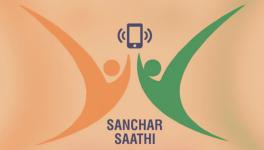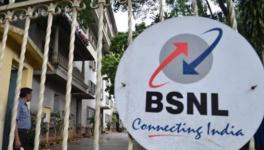"Reasonable Analysis, Questionable Conclusions: Comments on the DoT Report on Net Neutrality"
The report on net neutrality recently released by a committee of the Department of Telecommunications (DoT) has a rather mixed bag of recommendations. The report is fairly comprehensive in detailing several contentious issues raised by the subject of net neutrality. However, the conclusions and recommendations in the Report are, occasionally, inconsistent with the arguments and rationale presented in the text of the report. A reasoned position taken in the analysis is often contradicted by the final recommendation.The DoT Report is not as unbalanced as the TRAI consultation paper released earlier this year – possibly because the DoT actually consulted constituencies other than the major telecom companies. It is encouraging that DoT has, to some extent, taken a pro-consumer / user position in making its recommendations. Rather than debating the need for net neutrality regulation, it has recognized that certain core principles must be followed in the interests of the public. The focus is now on how to contour the proposed regulations to ensure an appropriate balancing of all interests.
The report is unequivocal in stating that ‘core principles’ of net neutrality must be adhered to. However, nowhere in the report does it specifically mention what these core principles are. (We could deduce, of course, that non-discriminatory behavior, encouraging competition and openness form the basic principles of net neutrality). While its general support for the principles of net neutrality is a positive step, much depends on how the regulations will be fleshed out. The guidelines provided by the report are minimalistic, and merely indicative in nature.
Perhaps the biggest problem of the DoT Report is its failure to make tough calls. On the regulation of OTTs (Over the Top Applications and Services),it has used questionable logic to provide the incumbent telcos with exactly what they want, while not making the sell-out as blatant as TRAI did. On the issue of zero-rating, the report has, essentially, thrown the ball back in TRAI’s court. Keeping in mind the common perception that TRAI is merely an industry body in the guise of a regulator, this basically means that consumer interest is unlikely to be protected.
Regulation of OTTs:
One of the key questions of the net neutrality debate, and quite possibly the issue that sparked off this series of consultations by TRAI and the DoT, is whether to license OTT service providers.
In dealing with this question, the Report indulges in a rather adroit juggling act to justify giving the big telecom companies exactly what they want. The Report classifies all services / application / content on the Internet into two categories – ‘Application OTTs’ and ‘Communication OTTs’. The latter is defined as any service that provides real-time communication services (and so competes with existing telecom players who provide ‘similar’ communication services). The former includes all other types of content, services and applications -- everything but real time communication apps and services.

Image Courtesy: pixabay.com
The DoT Report essentially states that all OTTs (all services / content / applications on the Internet) can be licensed or regulated by them should they so desire: “A view arising from legal considerations is that all OTTs fall under the Telegraph Act and require a license to be granted for service provision.” But as there is no possibility for arbitrage in the case of OTT Application providers and existing telcos, there is no need to regulate Application OTTs -- There is no economic or other rationale for this.
Communication OTTs, however, are brought under a licensing regime to ensure no regulatory arbitrage vis-à-vis existing communication services (voice calls for instance, which require licensing from the government). Based on the possibility of disruption of the incumbent telco’s revenue models and the pricing arbitrage in VOIP OTT communications (compared to traditional voice telephony), the report recommends that only those communication OTTs that provide domestic voice communications should be regulated.
The logic used by the report in reaching this conclusion is questionable. It does not even adequately examine the issue of whether the DoT can indeed regulate all OTTs under the existing provisions of the Telegraph Act.
First, the classification of applications / content / services into ‘communication’ and ‘application’ OTTs is vague, and will prove incredibly difficult to implement in practice. Many of the services that fall within the Application OTT category according to the Report, can be used for real time communications between users, given the increased instances of convergence on platforms. For instance, the Report mentions Facebook and YouTube as application OTTs; but they can be used for real time person-to-person communications. We are likely to see more converged services in the future. Trying to decide what requires or does not require a license will be an impossible job, and will restrict innovation in, and growth of, the OTT market.
Second, one of the points of differentiation mentioned in the Report is the fact that Communication OTTs consume large amounts of bandwidth, and may restrict usage of other applications. This is not strictly true. BEREC, the EU body dealing with net neutrality, has found that traffic management for VOIP services is not required specifically to prevent congestion on a network.1 Even otherwise, the logic does not seem to hold good when you compare the bandwidth consumption and other requirements of video streaming (say on Youtube), and other heavy content / jitter sensitive based applications (such as online gaming).
Third, the only consideration for mandating the licensing of OTT domestic voice services appears to be the possible revenue losses caused to TSPs given the possibility of pricing arbitrage. But since the Report has mentioned several times that the revenues of TSPs are growing at a more than sufficient rate (at approx.. 10% pa), and the logic doesn’t appear to hold.2 Either they are doing badly, and voice is being cannibalized, or they aren’t. The DoT’s logic to differentiate this particular class of traffic (domestic voice) does not appear to be very solid. It is far more common for an Indian to make VOIP calls abroad than locally due to the low cost of domestic calling compared to international calling. It is strange then that international VOIP, and even messaging, do not get the same treatment as domestic VOIP.
Zero Rating:
The Report dedicates a fair bit of space to examining the issue of zero rating. It says all the right things, before failing to take the logical step of applying its analysis to the specific cases at hand – notably Internet.org and Airtel Zero. Both cases are discussed in the report, but no concrete position is taken on such agreements.
The DoT begins by (rightly) cautioning against the dangers of ‘gatekeeping’ and states that all platforms should be open. It then leaves it to TRAI to make a case-by-case determination on all such arrangements, using certain broad tests laid down in the Report). The discussion is therefore shifted to whether the conditions laid out by the TSP/content provider for the specific zero-rated service are sufficiently open in the way they operate.
While the Report states that exclusive agreements should not be permitted, it fails to understand that drawing a distinction between exclusive and non-exclusive agreements may not be practically workable. For instance, you may have an agreement between a content provider and a telco for preferential access, based on a very high payment, which no other content provider can match. While not an explicitly exclusive arrangement, the high cost could act as a practical deterrent for other content providers to enter into similar deals. Similarly, technical conditions could also be imposed so that what is notionally a ‘non-exclusive’ agreement is, in effect, an exclusive agreement. Given that all zero rating agreements tend towards the creation and maintenance of a walled garden, permitting a case by case analysis of the issue -- with the exception of totally free public Internet provision -- is pointless. In fact, the only examples of ‘good’ zero rating agreements in the report are the case of free Internet coupons / free wi-fi, and in the case of government programs. Internet coupons and wi-fi do not constitute a zero-rating issue as access is free to the entire Internet and not specific websites or content. And clearly, zero rating must be permitted in the case of government programs to enable equitable and subsidized access to all. Using this rationale to allow commercial zero rating makes little sense given the importance given to openness and promoting competition throughout the report. The government usually has a monopoly on the services it providers, so these similar considerations will not apply in the case of government zero rating its own content3.
Some Positives:
Despite the disappointing stances taken on two of the most critical issues, the report does have plenty of positives as well.
Its commitment to maintain core principles of net neutrality is unambiguous. The report specifically recommends that all (legal) content on the Internet should be equally accessible. This means no blocking or throttling or paid prioritization.
One of the most noteworthy aspects of the Report is its focus on user / consumer rights. The report repeatedly returns to the need to ensure a rights-based perspective on net neutrality, and, specifically, the need to protect the consumer’s privacy. A critical recommendation in this respect is the bar on deep packet inspection. It is a pity, though, that the report does not deal with the issue of how certain types of ‘legitimate’ traffic management will be conducted if DPI is barred. If all Traffic Management Practices that use DPI are banned, this may, arguably, affect a TSP’s ability to ‘legitimately’ differentiate between different types of traffic.
The recommendation of an open, publicly accessible complaints / redressal procedure is significant. The DoT Report must also be commended for mandating complete transparency by a telco/ISP to ensure that consumers can make informed choices. However, there is a necessary corollary missing here -- ensuring that consumers are in a position to exercise that choice. Cartelization between Internet service providers to ensure that consumers on the ground have no real choice between providers is all too common.
To sum up, the DoT Report certainly says many positive things and deals with the issue of net neutrality in a fairly balanced way -- at least on the face of it. The problem is that the report’s final recommendations do not always reflect its own discussion and analysis.
1 See BEREC, ‘Differentiation Practices and related competition issues in the scope of Net Neutrality’, BoR (12) 31, 29 May 2012, 49, cf. Net Neutrality: a regulatory perspective, GSR 2012 discussion paper , International Telecommunication Union.
2 The Report mentions that ‘The Committee is of the view that the statement of TSPs that they are under financial stress due to rapidly falling voice revenues and insufficient growth in data revenues is not borne out by evaluation of financial data. There is a healthy growth revenue particularly from data – which has compensated to some extent the expected shortfall in voice revenue growth.’
3 Though even in the case of government services being zero rated, it is possible for the government to skew the market if allowed to enter into exclusive agreements with specific telcos.
Disclaimer: The views expressed here are the author's personal views, and do not necessarily represent the views of Newsclick
Get the latest reports & analysis with people's perspective on Protests, movements & deep analytical videos, discussions of the current affairs in your Telegram app. Subscribe to NewsClick's Telegram channel & get Real-Time updates on stories, as they get published on our website.
























